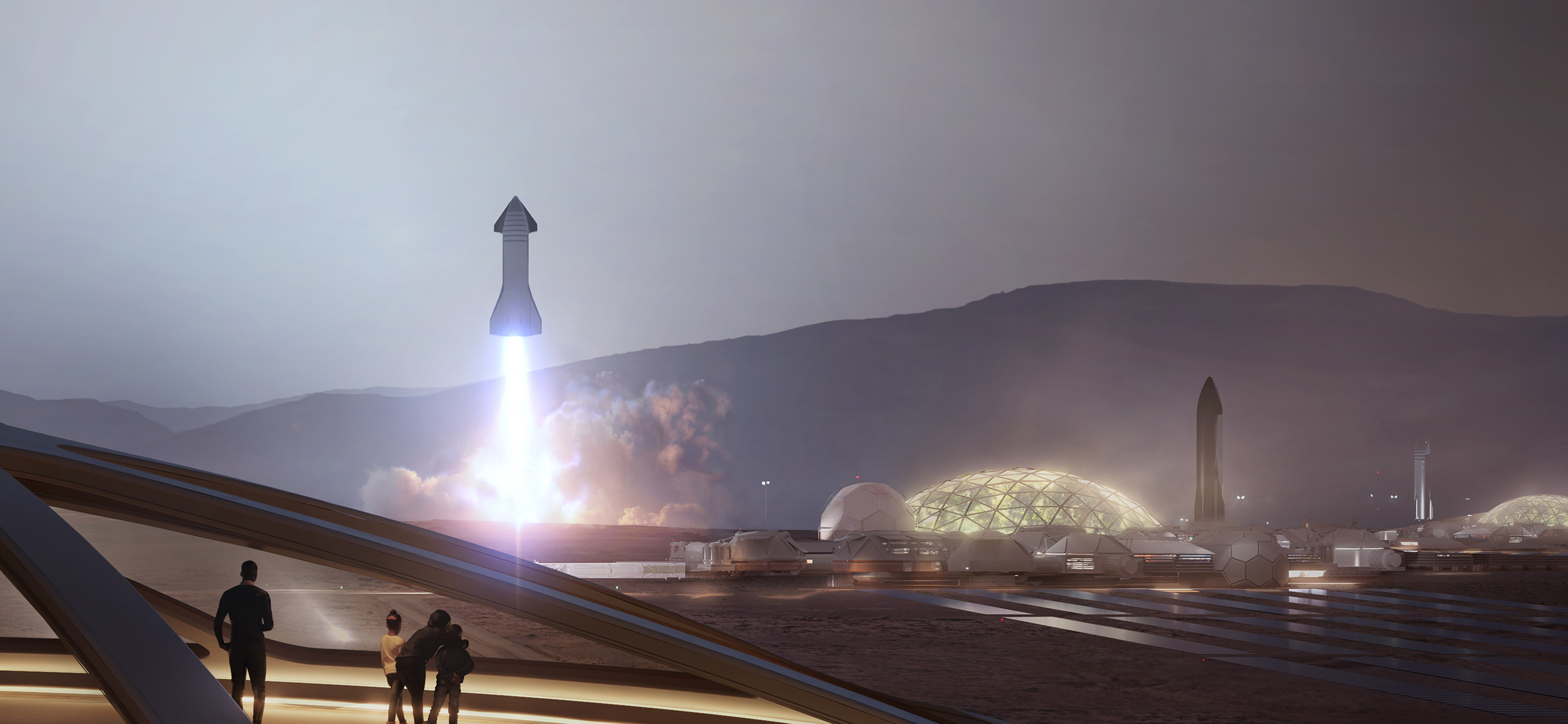
MARS & BEYOND
The road to making humanity multiplanetary

“You want to wake up in the morning and think the future is going to be great - and that's what being a spacefaring civilization is all about. It's about believing in the future and thinking that the future will be better than the past. And I can't think of anything more exciting than going out there and being among the stars.”
-Elon Musk
WHY MARS?
At an average distance of 140 million miles, Mars is one of Earth's closest habitable neighbors. Mars is about half again as far from the Sun as Earth is, so it still has decent sunlight. It is a little cold, but we can warm it up. Its atmosphere is primarily CO2 with some nitrogen and argon and a few other trace elements, which means that we can grow plants on Mars just by compressing the atmosphere. Gravity on Mars is about 38% of that of Earth, so you would be able to lift heavy things and bound around. Furthermore, the day is remarkably close to that of Earth.
Diameter
Day Length
Force of Gravity
Avg Distance from Earth
Age
6,791 km / 4,220 mi
24 hrs 37 min
38% of Earth
225Mkm / 140Mmi
4.5 billion years
6
MONTHS TO GET TO MARS
STARSHIP
SpaceX's Starship spacecraft and Super Heavy rocket - collectively referred to as Starship - represent a fully reusable transportation system designed to carry both crew and cargo to Earth orbit, the Moon, Mars and beyond. Starship is the world's most powerful launch vehicle ever developed, capable of carrying up to 150 metric tonnes fully reusable and 250 metric tonnes expendable.
TO MARS AND BACK
Together the Starship spacecraft and Super Heavy rocket create a reusable transportation system capable of on orbit refueling and leveraging Mars' natural H2O and CO2 resources to refuel on the surface of Mars.
01. LAUNCH & BOOSTER RETURN
Starship launches with Starship Super Heavy booster. Booster separates, returning to Earth.
02. SHIP ARRIVES IN EARTH ORBIT
Starship enters Earths orbit while a refilling tanker launches to mate with Starship in orbit.
03. TANKERS REFILL SHIP AND RETURN TO EARTH
Tanker ship docks with Starship, refilling Starship and returning to Earth
04. REFILLED SHIP TRAVELS TO MARS
Once Starship has been fully refueled, it will begin its journey from Earth orbit, around the Sun and onward to Mars.
05. SHIP REFILLED ON MARS USING LOCAL RESOURCES
When Starship lands on Mars it will be refueled using Mars local resources of H20 and CO2.
06. SHIP PERFORMS MARS ASCEND & DIRECT RETURN TO EARTH
When Starship is fully refueled it will begin Mars ascent and direct return to Earth.
ON-ORBIT REFILLING
Starship leverages tanker vehicles (essentially the Starship spacecraft minus the windows) to refill the Starship spacecraft in low-Earth orbit prior to departing for Mars. Refilling on-orbit enables the transport of up to 100 tons all the way to Mars. And if the tanker ship has high reuse capability, the primary cost is just that of the oxygen and methane, which is extremely low.

LANDING ON MARS
Starship will enter Mars' atmosphere at 7.5 kilometers per second and decelerate aerodynamically. The vehicle's heat shield is designed to withstand multiple entries, but given that the vehicle is coming into Mars' atmosphere so hot, we still expect to see some ablation of the heat shield (similar to wear and tear on a brake pad). The engineering video below simulates the physics of Mars entry for Starship.
For inquiries about our MARS AND BEYOND program, contact sales@spacex.com